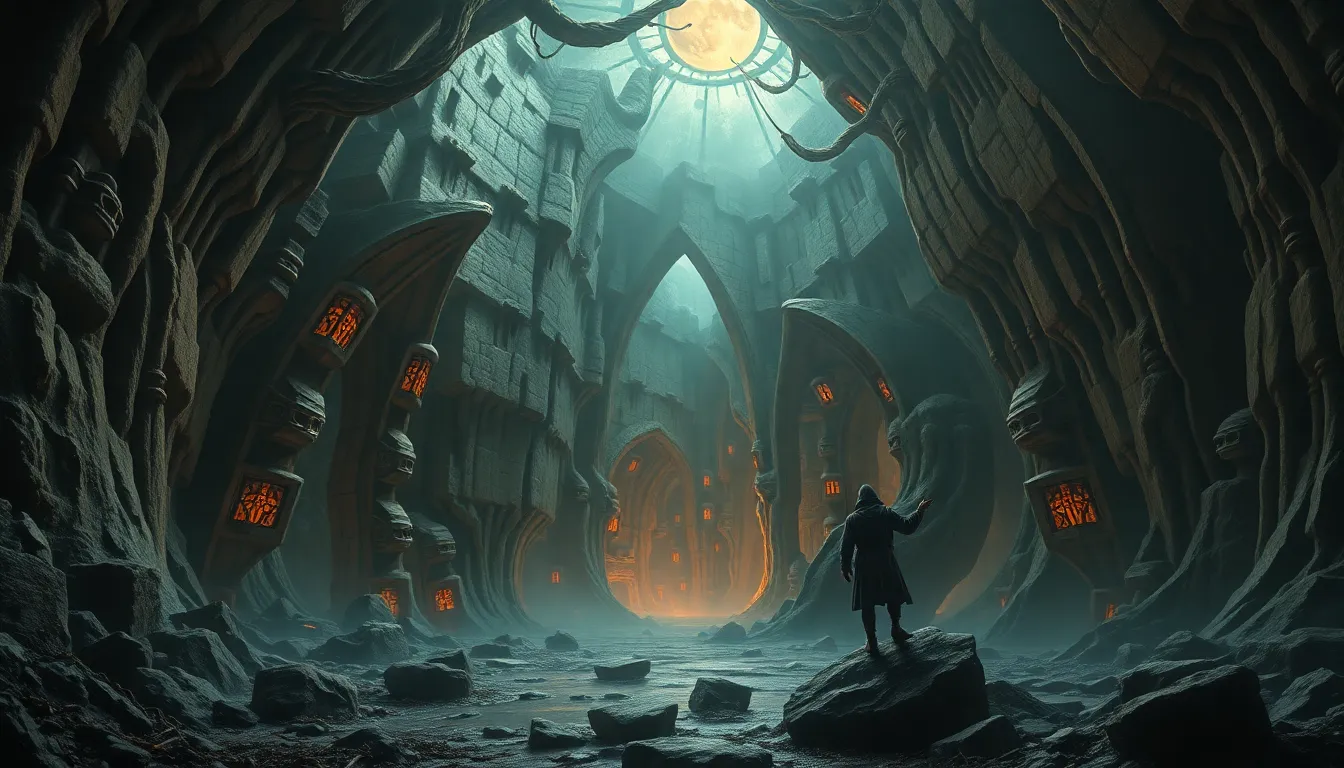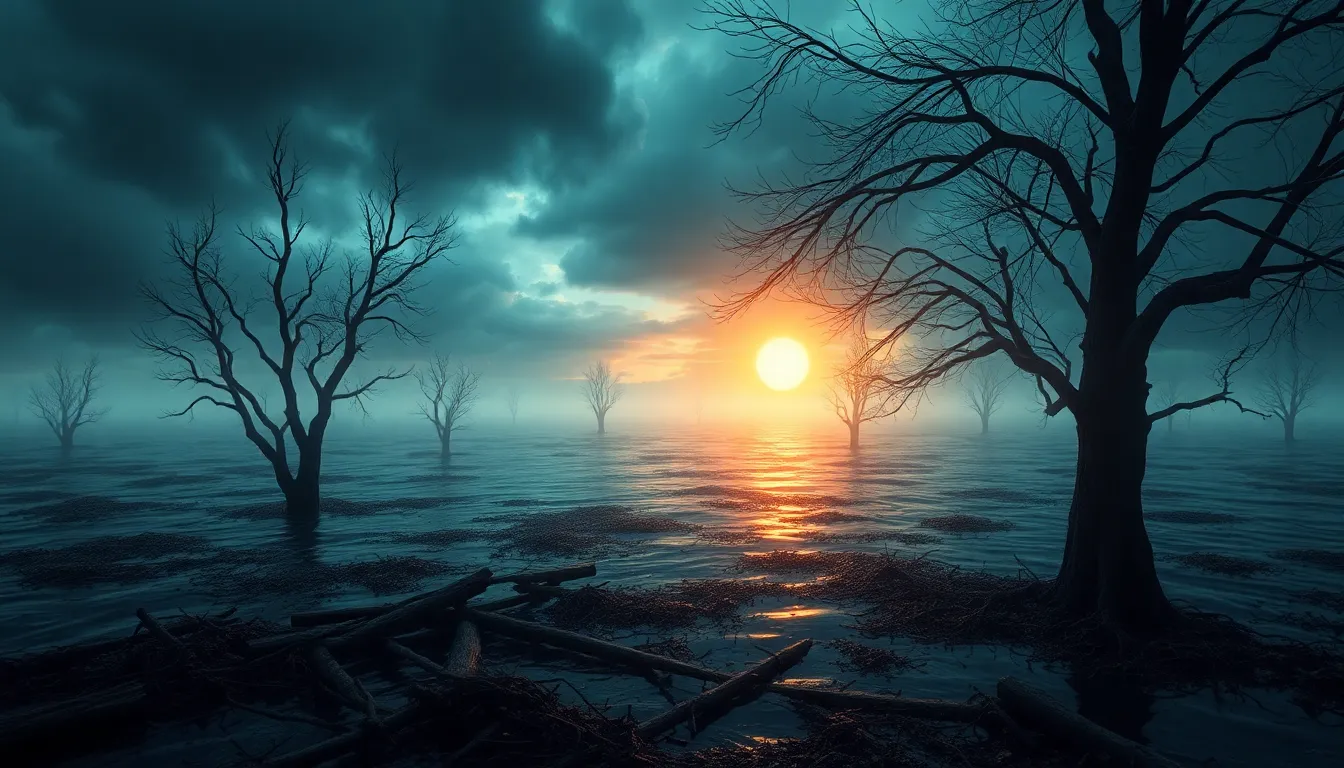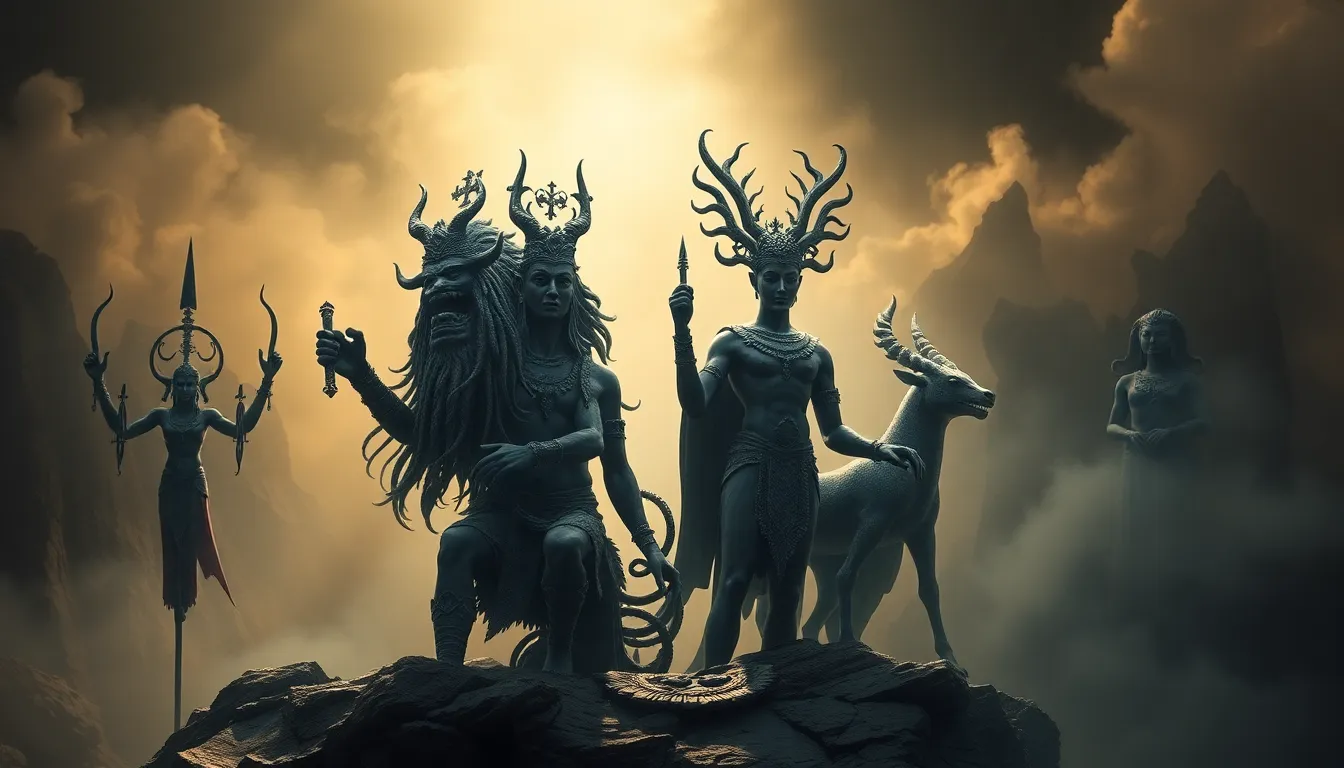The Underworld: A Mythical Exploration of Life and Death
I. Introduction to the Concept of the Underworld
The concept of the Underworld has captivated human imagination for centuries, representing the realm where souls go after death. This idea is not only significant in mythology but also serves as a reflection of cultural attitudes towards mortality and the afterlife.
In various cultures, the Underworld is depicted as a place of judgment, punishment, or peace, mirroring the duality of life and death. It serves as a powerful reminder of human transience and the mysteries that lie beyond the physical existence.
Exploring the Underworld in mythology allows us to uncover the beliefs, fears, and hopes that societies have held regarding what lies beyond life. This exploration reveals how different cultures interpret the unknown and the moral lessons they convey through their stories.
II. Historical Context of the Underworld
A. Ancient civilizations and their beliefs (e.g., Mesopotamia, Egypt, Greece)
Throughout history, ancient civilizations have developed intricate beliefs about the Underworld. For instance:
- Mesopotamia: The Underworld, known as Kur, was seen as a dreary place where all souls went, regardless of their actions in life.
- Egypt: The Duat was a complex realm where souls navigated through challenges before reaching the afterlife, emphasizing the importance of righteousness.
- Greece: Hades, ruled by the god of the same name, was a structured afterlife that featured different areas for souls based on their earthly deeds.
B. Evolution of Underworld myths through the ages
Over time, Underworld myths have evolved, reflecting changes in societal values and beliefs. Initially, these myths were often bleak, portraying the Underworld as a place of despair. However, as cultures progressed, more nuanced interpretations emerged, including notions of reward and reincarnation.
C. Comparative analysis of Underworld concepts across cultures
Despite the differences, many cultures share common themes in their Underworld myths, such as:
- The journey of the soul after death.
- The presence of guides or guardians.
- Judgment based on one’s actions during life.
III. The Underworld in Greek Mythology
A. Hades: The realm of the dead
In Greek mythology, Hades is not just the name of the god but also refers to the entire realm of the dead. This underworld is divided into various regions, including the Elysian Fields for the virtuous and Tartarus for the wicked.
B. Key figures: Charon, Cerberus, and Persephone
Several key figures populate the Greek Underworld:
- Charon: The ferryman who transports souls across the River Styx, demanding payment in the form of an obol.
- Cerberus: The three-headed dog who guards the gates of Hades, preventing the escape of the dead.
- Persephone: The queen of the Underworld, whose annual return to the surface symbolizes the cycle of life and death.
C. The journey of the soul: From life to the Underworld
The journey to the Underworld involved several stages, including the crossing of the Styx and the judgment by Hades and Persephone. Souls were evaluated based on their earthly lives, determining their eternal fate.
IV. The Underworld in Egyptian Mythology
A. Duat: The Egyptian realm of the afterlife
The Duat is a complex and multifaceted realm where the dead undergo trials and tribulations. It is depicted as a dark, watery landscape filled with various challenges.
B. The role of Osiris and the judgment of souls
Osiris, the god of the afterlife, plays a pivotal role in Egyptian beliefs. He judges the souls of the deceased, weighing their hearts against the feather of Ma’at to determine their fate.
C. Symbolism of the Book of the Dead
The Book of the Dead serves as a guide for the deceased, containing spells, prayers, and instructions for navigating the Duat. It emphasizes the importance of living a righteous life to secure a favorable judgment.
V. The Underworld in Asian Mythology
A. Yama: The Hindu and Buddhist lord of death
In Hindu and Buddhist traditions, Yama is the god of death who oversees the souls of the departed. He plays a crucial role in the cycle of life and death.
B. The concept of reincarnation and karma
Reincarnation is a central theme in these beliefs, where the actions of an individual (karma) influence their next life. The Underworld serves as a transitional space for souls before rebirth.
C. The Underworld in Chinese mythology: Diyu and its layers
Diyu, or the Chinese Underworld, consists of multiple levels where souls are judged and punished. Each level represents different sins and corresponding consequences, reflecting a moral framework within the belief system.
VI. The Underworld in Indigenous Myths
A. Perspectives from Native American beliefs
Many Native American cultures have unique views on the Underworld, often incorporating elements of nature and spirituality. The Underworld is seen as a place of ancestors and a source of wisdom.
B. The role of ancestors and spirit journeys
Ancestors play a significant role in guiding the living, and many myths involve journeys to the Underworld for insights and healing.
C. Integration of the Underworld in storytelling and rituals
The Underworld is often woven into storytelling and rituals, emphasizing connection with the past and the importance of honoring the dead.
VII. Symbolism and Themes Associated with the Underworld
A. Life, death, and rebirth: Cycles of existence
The Underworld symbolizes the cyclical nature of existence, where death is not an end but a transition to new beginnings. This theme resonates across various cultures and philosophies.
B. Fear and fascination: The human relationship with death
Humans have a complex relationship with death, characterized by both fear and fascination. The Underworld embodies this duality, serving as a space for reflection on mortality.
C. The Underworld as a metaphor for the subconscious mind
Psychologically, the Underworld can represent the subconscious, a place where hidden fears and desires reside. Myths about the Underworld often explore themes of self-discovery and personal growth.
VIII. The Underworld in Modern Literature and Pop Culture
A. Depictions in contemporary novels and films
Modern literature and films frequently draw on Underworld themes, showcasing characters’ journeys to confront their pasts or understand their identities. Examples include:
- The Lovely Bones by Alice Sebold, which explores the afterlife experience of a murdered girl.
- Hades in the Percy Jackson & the Olympians series, which creatively reimagines Greek mythology.
B. Influence of ancient myths on modern storytelling
Ancient Underworld myths continue to influence modern storytelling, providing rich narratives that resonate with contemporary issues of identity, loss, and redemption.
C. The Underworld in video games and interactive media
Video games like Hades and God of War incorporate Underworld themes, allowing players to engage in immersive narratives that explore mythological realms and personal struggles.
IX. Psychological Interpretations of the Underworld
A. Archetypes and the collective unconscious (Carl Jung)
Psychologist Carl Jung suggested that the Underworld symbolizes archetypes within the collective unconscious, representing universal human experiences and emotions.
B. The Underworld as a representation of internal struggles
Many narratives about the Underworld reflect internal conflicts, depicting characters’ journeys through their fears, regrets, and desires.
C. Therapeutic applications of Underworld narratives
Underworld narratives can be therapeutic, helping individuals process grief, loss, and their own mortality, allowing for healing through storytelling.
X. Conclusion
The Underworld remains a compelling aspect of human mythology, reflecting our deepest fears, beliefs, and hopes regarding life and death. By exploring various interpretations across cultures, we gain insight into the human experience and the universal quest for understanding the mysteries of existence.



